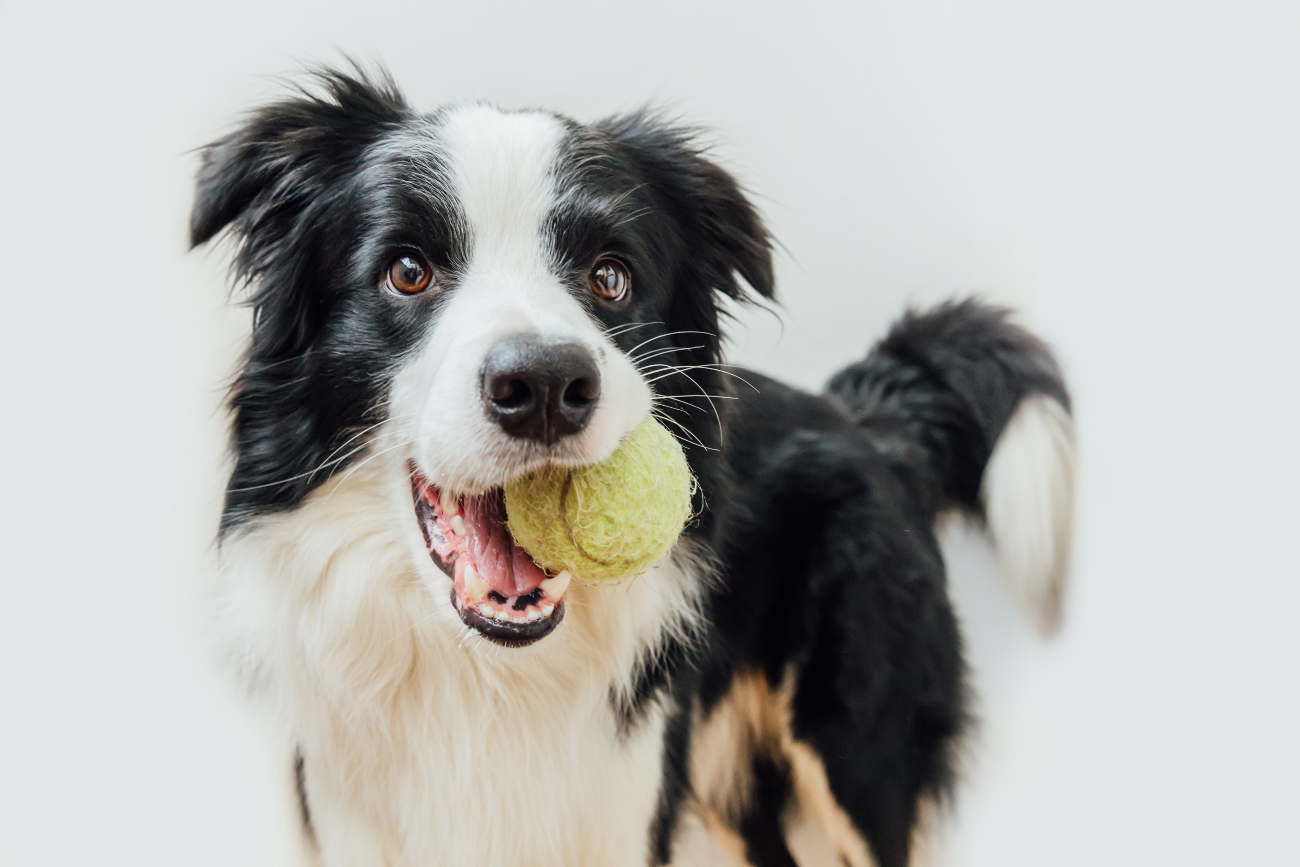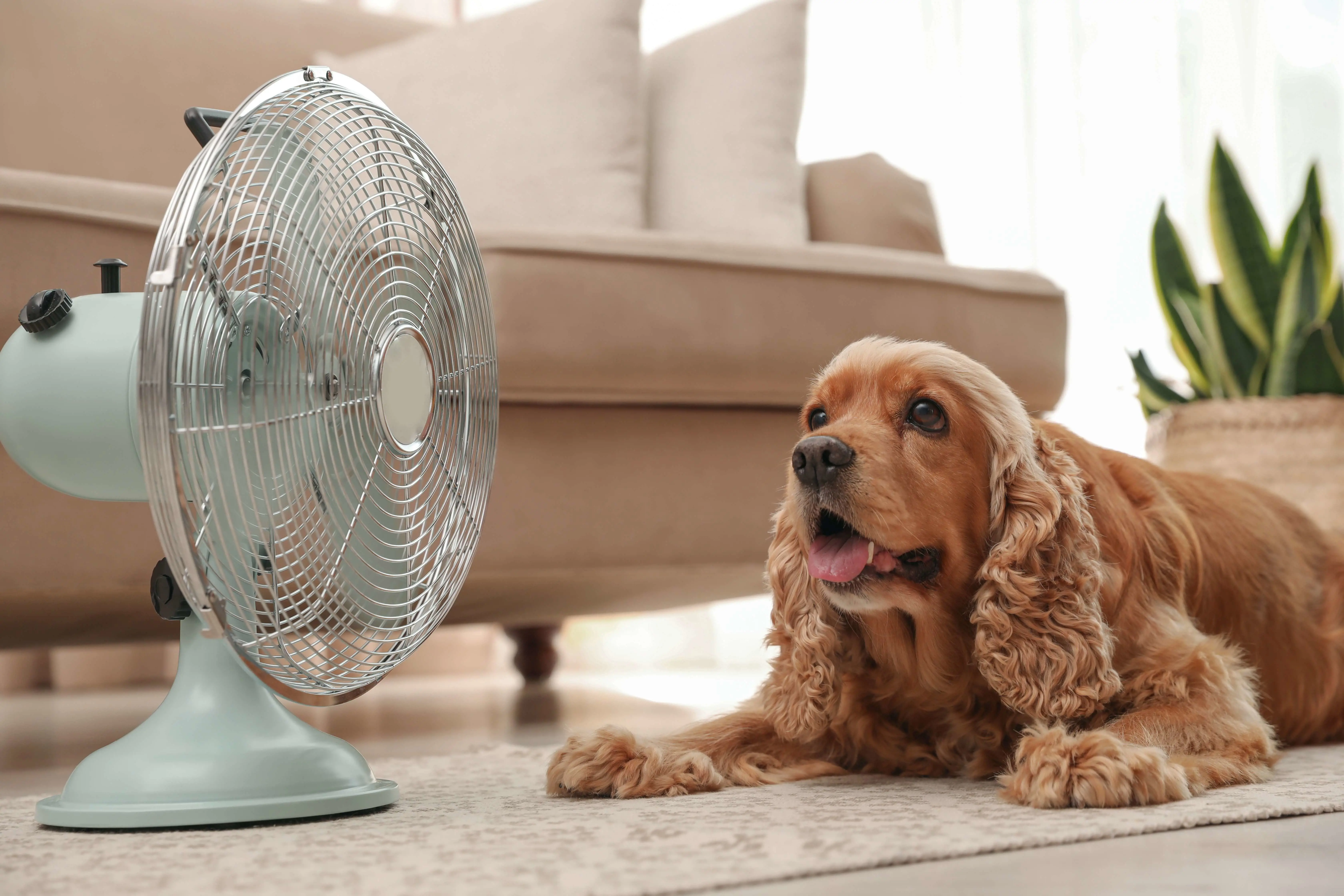When can you bathe a puppy?
15th March, 2023
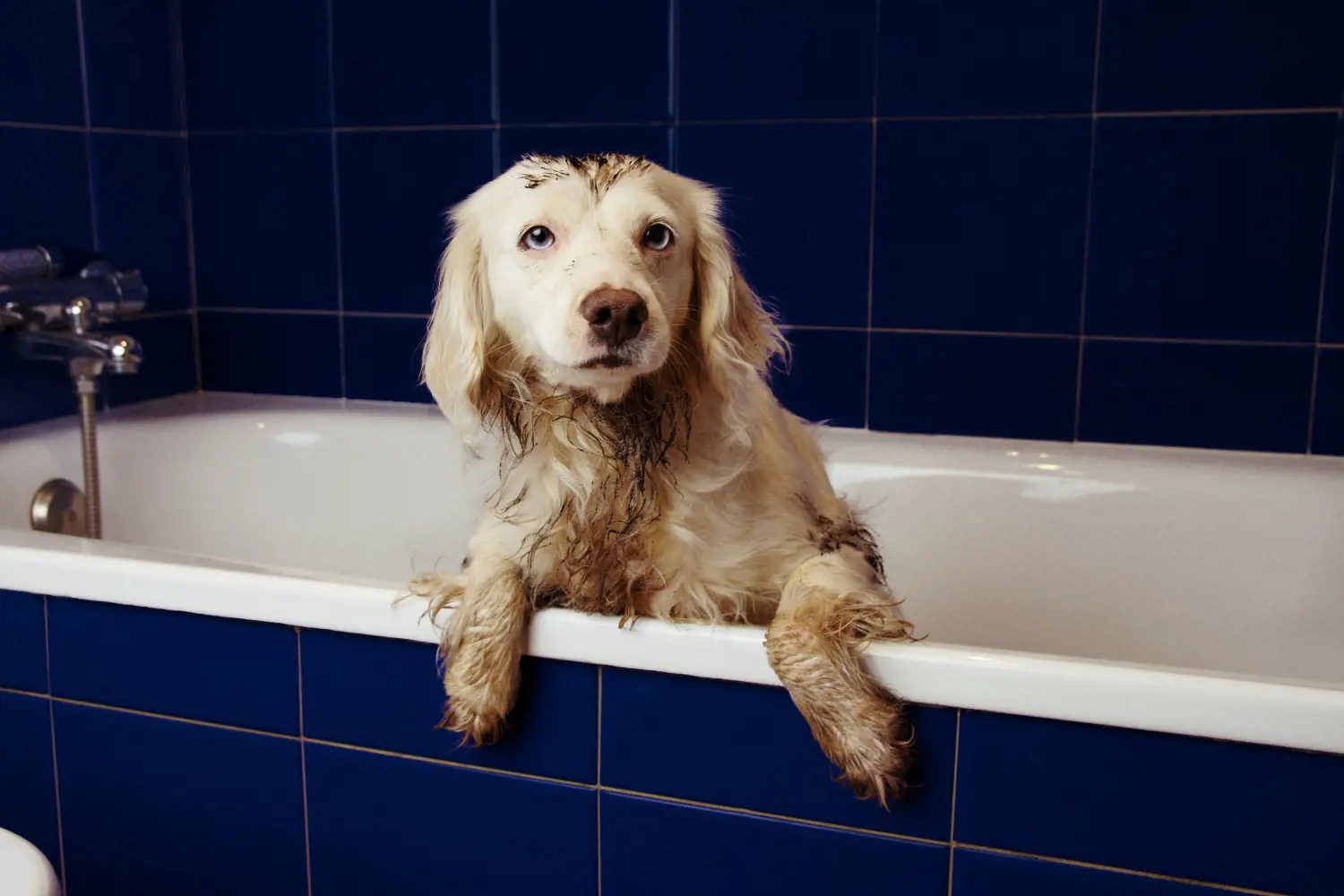
Is your new pup starting to whiff? Here’s everything you need to know about bath time, including how often you should bathe your dog.
The water is the perfect temperature. The doggy shampoo, brush and towel are ready to go. But your pup looks a little nervous.
Getting that first bath just right is important. How you handle your puppy and the atmosphere you create will set the bath time tone for years to come. Making your pup feel uncomfortable or forcing them into the water could cause a host of problems that continue well into the future.
Not sure where to begin? Don’t worry!
We’ve got tips on how to create the ideal stress-free environment and make tub time fun and relaxing for your new dog.
We’ll also tell you how often to wash your pup, because too much of the wet stuff can cause skin and coat conditions – that’s the last thing you want for your four-legged family member!
Learn what other skin conditions to watch out for and how dog insurance from Purely Pets can protect them if they need treatment.
So, when should you bathe your new puppy?
As soon as you bring your puppy home, you’ll be keen to start training and getting them used to life as part of your family – this includes bath time. But when should you first pop them in the tub? Can you bathe a puppy at 8 weeks old?
Yes! Once they reach 8 weeks, it’s OK to give them a bath if they need it. Before this age, your pup can’t self-regulate its body temperature, so bathing them could quickly cause them to get too hot or cold.
Got a younger pup and need to give them a quick clean? Gently wipe them over with a warm, damp flannel.
Regularly grooming your pup doesn’t stop at bath time. You’ll need to comb their fur and learn how to clean their teeth, too!
How often should you bathe a puppy?
The general rule of thumb is to wash your dog at least once every 3 months, but it’s fine to do it more often if necessary – after all, it’s in a puppy’s nature to go jumping in dirty puddles and rolling in the mud!
How often you bathe your pup will depend on a few factors:
- Their breed – toy dogs might be less adventurous than a boxer or lab, for example.
- Where you live – a country pup is much more likely to get mucky than a city hound.
- Their fur length – short hairs will pick up less dirt than long hairs.
- The time of year – your pup will need fewer baths in the dry summer months.
Be careful not to visit the bath too regularly, though. Dogs secrete natural oils to keep their coat shiny and healthy, and bathing too often can strip them away and leave their skin dry and itchy.
Dogs are also pretty good at cleaning themselves (although not quite as thoroughly as their feline friends) and can lick and nibble out dirt and debris from their fur.
Just keep an eye on excessive grooming, as this can signal underlying health issues. Give your vet a call or use our 24-hour vet video service included in our dog insurance plans for quick advice on your pup’s behaviour.
How can I tell if my puppy needs a bath?
You love your new puppy dearly, so looking after their skin by only bathing them when necessary is a top priority. So, how do you know it’s time for a dunk in the tub?
Perhaps the most obvious sign is a stinky pup or one who’s trawling muddy paw prints across your carpet!
You’ll also need to thoroughly wash your puppy if they have fleas or mites with a special shampoo to beat the bugs. The best way to avoid these pests in the first place is with regular treatments from your vet.
Along with grooming, these medications aren’t included on dog insurance plans, but they’re an essential part of budgeting for your new furry friend to keep them happy and healthy.
Don’t forget to make a note of when you bathe your puppy somewhere. This way, you can keep track and make sure they get a good wash at least once every 3 months. And, no, jumping in the river doesn’t count as a bath!
What do you need to give your puppy a bath?
It’s time for your pup’s first bath! But before you go sticking them in the tub and scrubbing them down, you’ll need to make sure you have everything to hand to make sure it goes smoothly.
Here’s a quick checklist before you begin:
-
Treats – to reward good behaviour
-
Towel – to dry them off (and maybe a spare one for you)
-
Brush – choose an appropriate one for their hair type
-
Shampoo and conditioner – make sure you have products specially formulated for dogs
-
Hair dryer – not so essential for short hair that dries quickly; make sure it’s on a low heat setting
-
Tub or container – could be your bathtub, a kid's paddling pool or the sink
-
Non-slip mat – to keep them on all fours
Make sure you bathe your puppy somewhere that doesn’t matter if they get wet. Expect them to have a good splash about and to do plenty of shaking once they jump out!
Don’t forget to protect your pet with dog insurance, too. You never know when they might slip or fall despite taking all the precautions.
How to bathe your puppy for the first time at home
Puppy – check! Equipment – check! Bathing products – check! It’s time to get clean!
Don’t worry if you or your puppy feels nervous. This is new for you both. To make sure your pet is comfortable and enjoys their first bath, follow our step-by-step guide below.
1. Set up your bathing station
Once you know where bath time will take place, make sure it’s ready for your pup. Pop a non-slip mat on the bottom of the tub to stop your pet from slipping and put all your supplies somewhere you can easily reach them.
You don’t want to leave your wet puppy unattended, or they’ll soon be tearing through your house soaking everything in their path!
2. Prepare your pup
With a suitable brush for your puppy’s fur type, thoroughly comb their coat to make sure there are no mats. Water turns knots into hard lumps that are challenging to remove unless you have a pair of clippers – not quite the start to bathing you’d hoped for!
3. Provide lots of love
The last thing you want is for your pup to feel nervous or scared, so lots of cuddles are a must. Before they enter the water, make sure they feel safe and cared for and give them a treat for good behaviour to help build trust.
You’ll need to keep calm, too, as getting irritated or showing you’re anxious could quickly put your pet off baths for good.
4. Check the water temperature
You might enjoy standing under a scalding shower, but dogs are more sensitive to heat than we are, so keep the water lukewarm. Start by wetting a flannel and running it over your puppy's fur to get them used to the sensation of water – it’s a funny feeling at first!
5. Apply the shampoo
Your puppy is still small and delicate, so be gentle and don’t scrub. Start with their hindquarters so they’re comfortable with the feeling by the time you reach their neck and head.
Move your hands in the direction that their fur grows and gently massage the puppy shampoo into their coat to tackle tough dirt. When you reach the puppy's head, use a flannel to avoid splashing suds in their eyes and ears.
After a good five minutes of lathering, it’s time to rinse thoroughly with a gentle stream of water.
6. Don’t forget to condition
Conditioner is just as important as shampoo, if not more! While shampoo does a fantastic job of cleaning your pup’s coat, it leaves it dry. Conditioner helps add the lost moisture back and leaves their fur shiny and healthy.
Add the conditioner the same way as the shampoo and be sure to rinse thoroughly to get it all out.
7. Time to dry
Once you turn the water off, prepare for the post bath shakes! To avoid getting absolutely drenched, throw a towel over your puppy and start patting them dry. Be gentle but make sure you dry everywhere, including their armpits and other hard to reach areas.
Don’t get cross if they want to play tug of war with the towel. Remember, you need to keep things fun and enjoyable.
If your puppy has longer hair and will tolerate a hair dryer, you can use it on a low setting and move it in the direction their fur grows while brushing.
During the summer, your pup can dry off by sunbathing or running about outdoors, but don’t let your pup out in the cold unless they’re completely dry or they could become seriously ill.
Need more tips to keep that coat shiny and healthy? Have a look at our article on how to care for your dog’s coat.
How can you tell if you’re bathing your puppy too much?
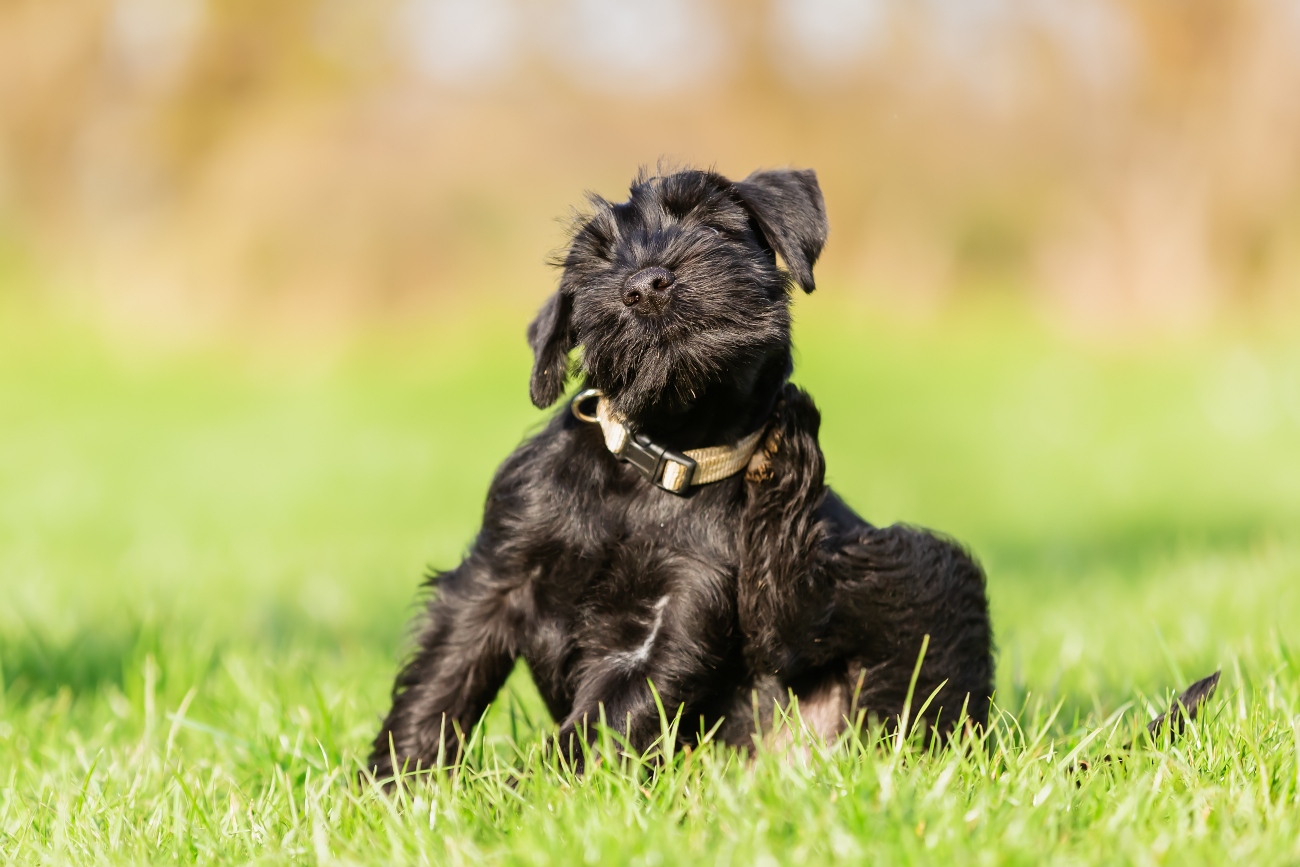
It can be tempting to bathe your puppy every few days to keep them smelling fresh, but you could actually be doing more harm than good. If you spot these warning signs, it’s time to adjust your dog washing schedule:
-
A dull coat that lacks shine
-
Dry fur and skin when you stroke your pet
-
Itchiness and dandruff
But what if you need to bathe your pup often? Their fur type and time they spend outdoors could mean once every few months isn’t enough. In this case, use moisturising shampoo and conditioner specially formulated to replenish their skin.
Noticed a new skin condition on your dog? If you have dog insurance through Purely Pets, book a video call with a vet now.
Can you bathe a puppy with human shampoo?
Your new puppy might be a fully integrated member of your family now, but that doesn’t mean you can share shampoo. Even your baby’s products are likely too harsh for their delicate puppy skin.
To avoid stripping your puppy’s coat of all the essential oils and moisture, use dog shampoo made specifically for them. Got a dirty pup and no shampoo to hand? Just stick to water for now.
Best puppy bathing products
Looking to gather some invaluable supplies to make puppy bath time enjoyable for everyone? Check out our top picks:
-
Groom Professional Dog Shampoo: A shampoo perfect for your puppy’s sensitive skin that leaves them smelling fresh and looking clean as a whistle.
-
BUGALUGS Dog Conditioner with Oatmeal & Aloe Vera: An ultra-nourishing formula that locks in moisture and helps work out stubborn knots.
-
Pet Teezer: Get the toughest of mats out before hitting the tub without pulling or tugging your pup’s coat with this dog brush.
-
WIMAHA Extra Long Bath Mat: Got a wriggler on your hands? Keep them on all paws with this extra-long non-slip mat.
-
UOMIO Dog Bathrobe: Dry your pup quickly and keep them snug with this fast-absorbing robe.
Common skin problems in puppies
Dry hair and skin from bathing isn’t the only condition you need to watch for. Itchy, red or sore skin are some of the most common reasons pet parents rush their pooches to the vet.
These health issues range from very mild to severe, so it’s important you always take your pet to the vet to get them back to their playful self again.
Make sure you cover your pup with dog insurance as soon as you bring them home to protect them in case of an emergency. At Purely Pets, we insure puppies as young as 8 weeks old, so contact our team to learn about the varying levels of lifetime cover for your dog.
Here are some of the more common dog skin conditions our customers ask us about.
Allergies
Just like us, your puppy is susceptible to a variety of allergies, including:
-
Seasonal allergies
-
Food sensitivity
-
Contact dermatitis
While hay fever and food allergies are often noticed by sneezing and stomach issues in humans, they’re more apparent on your dog’s skin than anywhere else.
Watch for excessive scratching and sore spots where they’ve itched too much. Your vet will be able to prescribe topical medication to help with itchiness and may suggest an elimination diet to see which foods could be causing the problem.
Mange
It’s normal for dogs to have demodex mites in their skin, but when they become overpopulated – not uncommon in young puppies – they cause irritation.
Mange occurs when the mites burrow into your dog’s skin and, if not dealt with properly, can lead to more serious health concerns and a claim on your dog insurance.
One type of mange, sarcoptic, is particularly contagious and can even be passed onto humans, so you want to get it sorted as soon as you spot the signs! Look out for extreme itching and damage to your pup’s skin as a result.
Ringworm
Despite the name, this condition isn’t a worm – it’s a naturally occurring fungus. Most humans and animals have a strong enough immune system that stops ringworm spores from causing them any trouble.
Your puppy is still young, though, and their immune system is still developing, making them more susceptible to an infection resembling athletes foot in people.
The experts at Blue Cross says to watch for:
-
Hair loss
-
Crusty skin
-
Red lesions
-
Grey, scaly patches
Ringworm can appear anywhere on your puppy’s body, but it’s most common on their paws, legs, ears and head. Be careful if you have other pets and small children as it can be passed on via broken skin.
Abscess
It’s no secret that puppies love to bound about, which means they’re also prone to the odd slip and fall. As a responsible pet parent, thoroughly check for and treat wounds as soon as you notice them, or an abscess may form. A vet will need to patch them up if the injury is anything more than a minor scratch.
These small lumps and bumps form when bacteria enters an open wound and causes an infection. Once an abscess appears, your pup will need to see a vet and take medicine to heal properly.
Worried about all these medical bills mounting up? Your specialist dog insurance can help cover costs in a medical emergency.
Flea and tick bites
Staying on top of flea treatments is the best way to combat these pests, but if you miss a dose, your puppy’s skin will pay the price.
Fleas multiply incredibly fast, and before you know it, your beloved pet can’t shake that itch. Some pups are even allergic to the pests, meaning a single bite could cause a severe reaction all over. We’ve got tips on banishing these bugs elsewhere on our site.
When it comes to ticks, you need to be extra careful. Remove any you spot on your dog with a proper tick removal tool, making sure you don’t squish them or leave the head behind. Why? Your pup could get Lyme disease.
The Kennel Club emphasises how the condition can become chronic and cause lifelong complications if left untreated, and no owner or their puppy wants that!
Sunburn
Your puppy has an adorable layer of soft fur that’ll protect them in the sun, right? Yes, mostly, but there are a few parts of their body where the skin is fully exposed, like the bridge of their nose and tummy.
On hot, sunny days, check your pet spends plenty of time in shady spots and watch for:
-
Dry, cracked skin
-
Scratching in tender places
-
Whimpering
-
Shying away when you touch them
-
Fever if it’s severe
If you suspect your puppy has sunburn, give your vet a call. Got a fever? Take them in for a check to prevent it from getting worse.
How to check your puppy’s skin for problems
The best way to avoid skin conditions leading to something more serious is to regularly check your puppy’s fur and skin. This is easy to do when you settle in for a snuggle sesh each evening.
Gently run your hands up and down their body and ask yourself the following questions:
-
Is their coat smooth and soft?
-
Are there any unusual lumps or bumps on their skin?
-
Does your puppy flinch when you touch a certain area?
-
Do you notice any greasy or moist spots?
If you do come across something unusual, don’t panic. Your dog insurance is there to protect your pup in an emergency and helps in providing financial support, so get them seen by the .
Protect your pup with dog insurance from Purely Pets
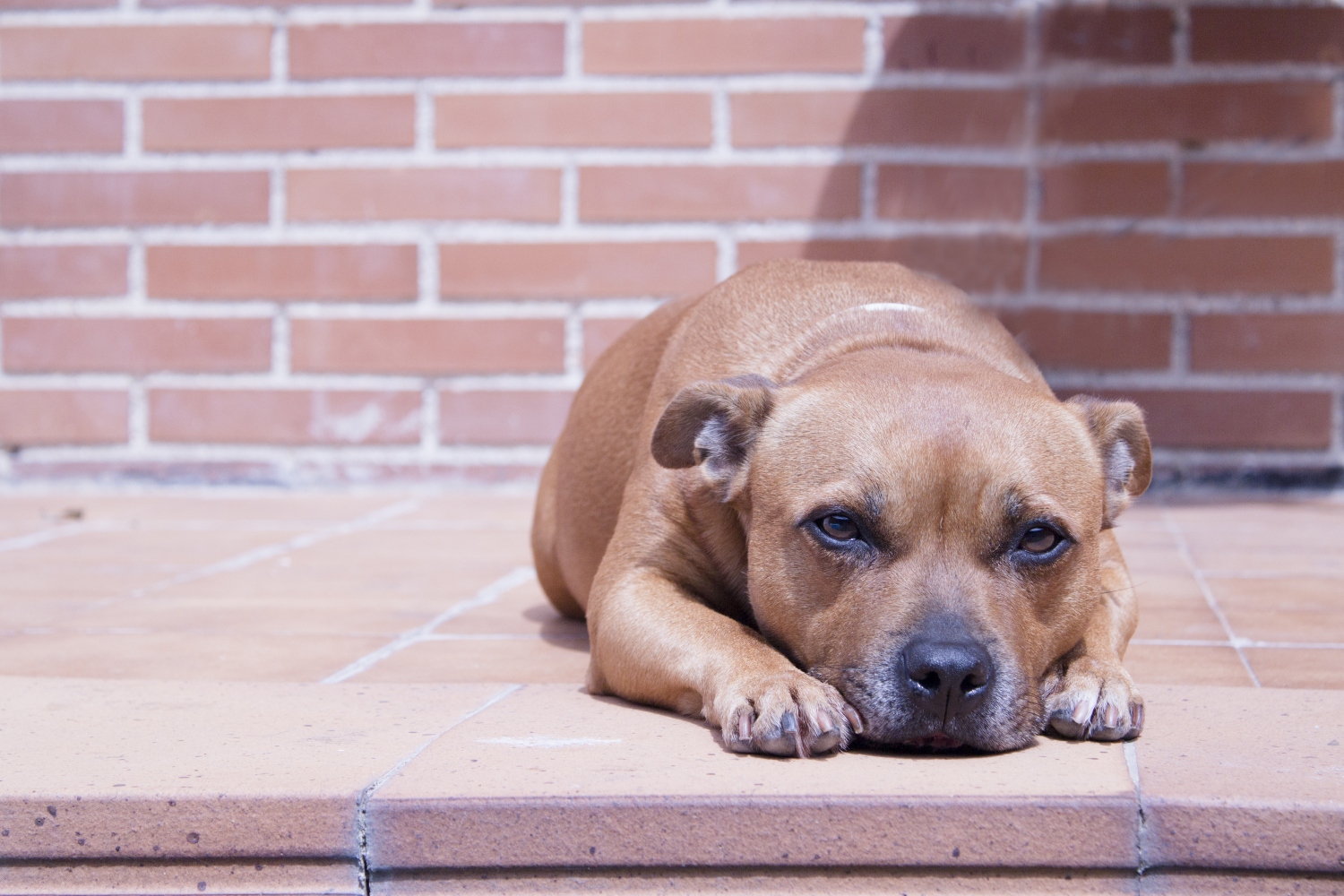
From our 15 levels of protection to our dedicated online policy management portal, we make insuring your pup as easy as can be.
All our dog insurance policies come with access to 24/7 vet video consultations so you can get answers fast when you need them most.
Isn’t it time you protected your pup with award-winning dog insurance from the specialists?
Call the team at Purely Pets today!
Helpful Pages
Recent Posts
Pet Insurance Quote
- 98% claims paid *
- Claims paid directly to vets
- 24/7 vet video consultations
- Interest free monthly payments

